Two gibbon extinct in my country, can they still come back?
Author:Species calendar Time:2022.09.16
On September 6, at the National Working Conference of the National Endangered Species of Species, the Evaluation Report 2022 of the Endangered Situation of Chinese Spiritual Avals was released. The report shows that in the past few decades, the white palm gibbon and north white cheeks gibbon distributed in China have not been monitored in the wild, which meets the standards of extinction in the wild.

White palm gibbon in Thailand National Park | JJ Harrison / Wikimedia Commons
These two gibbons are still distributed in Southeast Asia, but this result is still worthy of our attention -behind the regional extinction, the gibbon is the prosperous scene of the gibbon from "the cross -strait apes cannot cry" to now that it is trapped in Yunnan and Hainan to trapped in Yunnan and Hainan. The crisis of other places is in the evening. Can these two gibbons come back? Can other gibbons in our country turn in danger?

Disappearing gibbon
In recent decades, Hylobates Lar in my country is only distributed in Cangyuan, Western Union, Menglian and other places in Yunnan. Its final witness records stayed in 1988, and the last time people heard it screamed in 2000. Since then, in many searches of the gibbon of Bai Gong, people have not seen its traces, no traces of eating or excretion, and not even heard.
The gibbon is used to the tree habitat and is cautious, and it is not easy to search for visual search, but all the gibbon has the habit of singing in the early morning, and it is very far away.
Although the adjacent Thai -old Myanmar has a wild population with white palm gibbon, scholars have found that according to the four specimens studies in Menglian, Yunnan, the white palm gibbon in our country may be a morphological difference between the distribution of neighboring countries. It may be an independent independence. Subsidon -H. Lar Yunannsis (H. Lar Yunannsis). There is no other habitat worldwide in this subspecies, and there is no clear record of the subspecies in the zoo in our country; therefore, the extinction of white palm gibbon wild in our country may also mean that this subspecies will completely disappear -but This conclusion requires more research to be determined in the end.
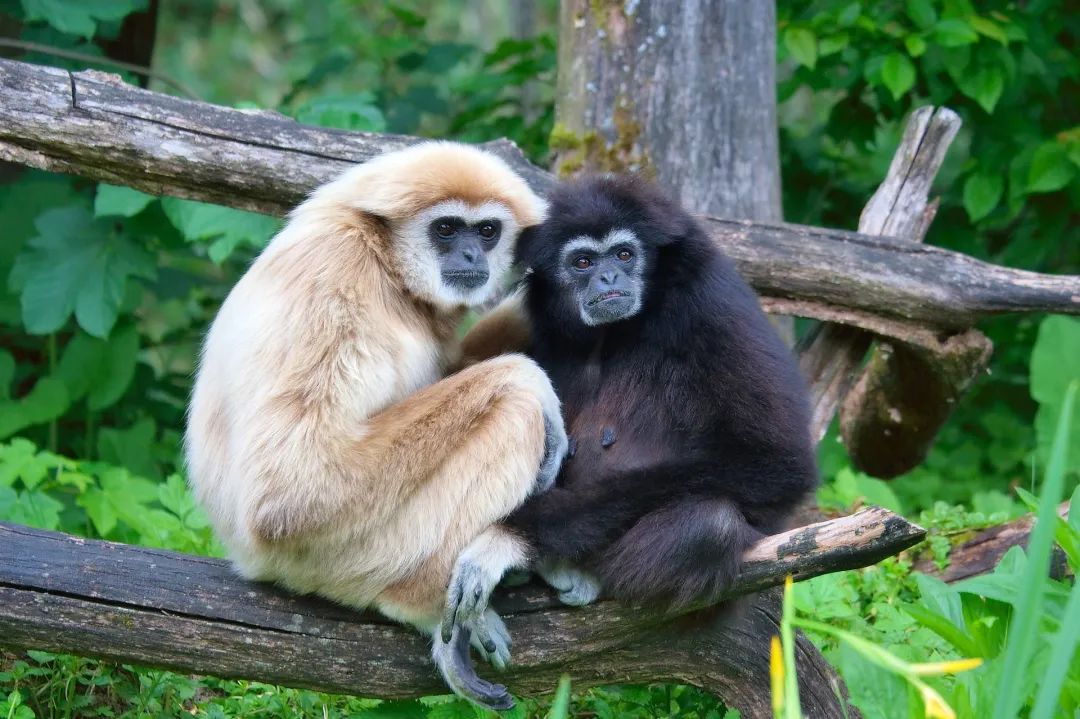
A pair of gibbons, but it is not a white palm gibbon in China, Yunnan Asian, which is not distributed in my country. It is difficult for us to find clear photos of Yunnan Asian species. The two white palm gibbon in the photo is significantly different. This is not caused by gender or age differences. The hair color of white palm gibbon is very rich, from pure black to beige
The last habitat of Nomascusleucogenys (Nomascusleucogenys) is also concentrated in Yunnan, specifically Mengla, Jiangcheng, Lvchun and other places. Since the mid -to -late 1980s, my country has conducted multiple rounds of research on the northern white cheeks, but there have been fewer and less evidence about their existence. In the 2011 survey, people could not find the traces of the gibbon or their voices. In 2018, photographer Xu Sheng took a male northern white cheeks gibbon in the rubber forest near the old and old borders, but the subsequent investigation was still disappointing -not only did scientific researchers return to return, but local residents also said that there were many. I haven't seen it or hear the gibbon. The one she was filmed may be wandered from Laos, or it may be abandoned or escaped by the gibbon, and it quickly disappeared without a trace.
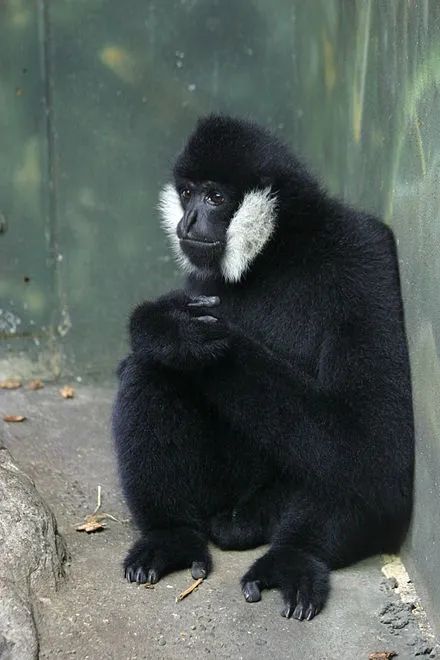
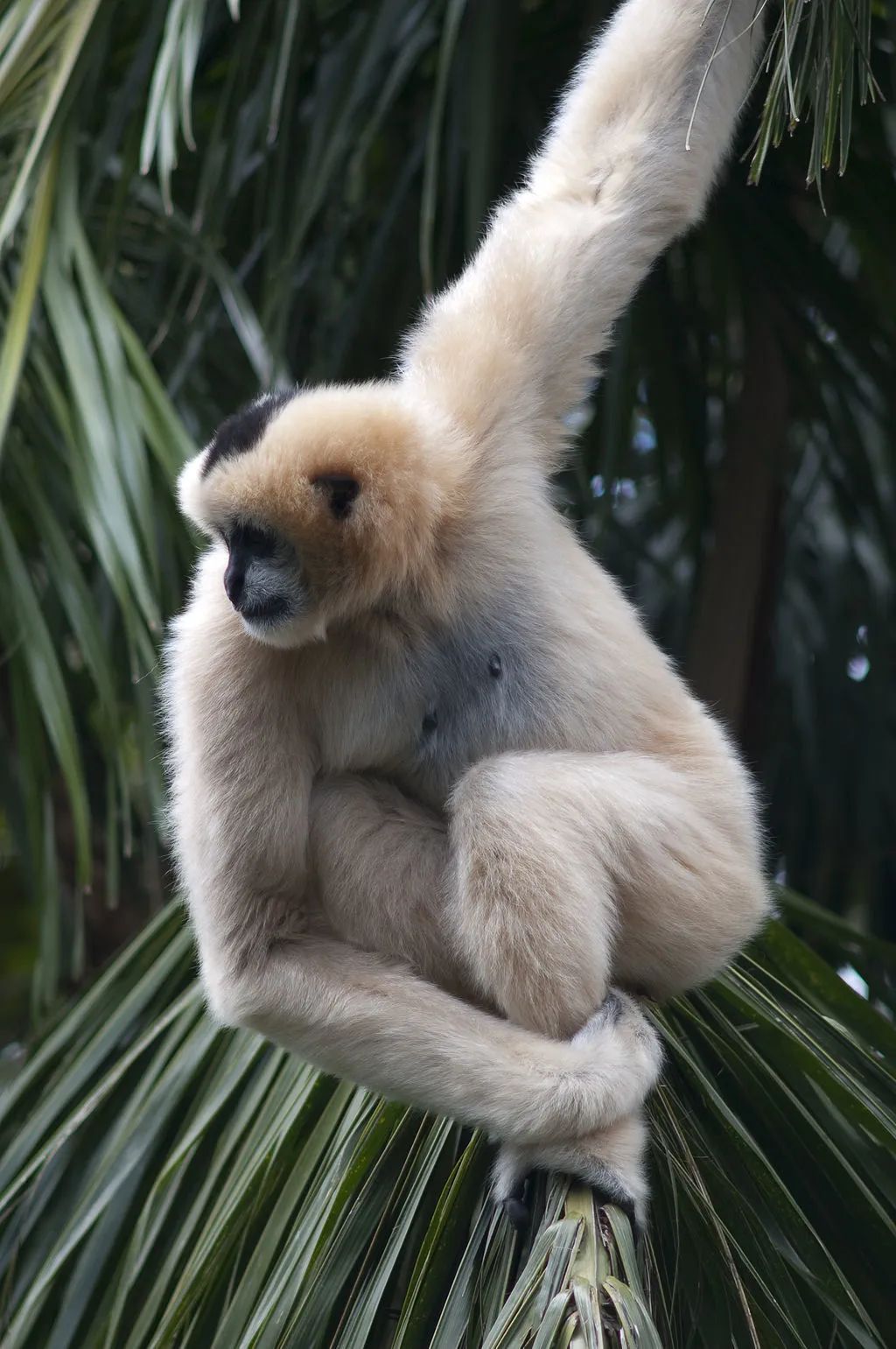
Slide to check the male and female individual of the north white cheeks gibbon, the appearance of the male and female individuals of the north white cheeks gibbon is significantly different. The male is black hair, and the female is brown | Grendelkhan Bilby / Wikimedia Commons
At present, there are wild species in northern and northern Vietnam, and there are also northern white cheek gibbon, and there are quite a large scale in my country. However, as long as you look back at history, you will find that the habitat of gibbon in my country has disappeared too much.

The apes on both sides of the strait can't cry
There are 17 members of the gibbon family. In addition to the white palm gibbon and north white cheeks gibbon, my country also distributed in the west black crown gibbon, east black crown gibbon, Hainan gibbon and the gibbon of the heavenly gibbon. At present, they are only distributed in Yunnan, Guangxi and Hainan.

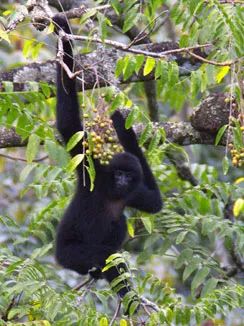
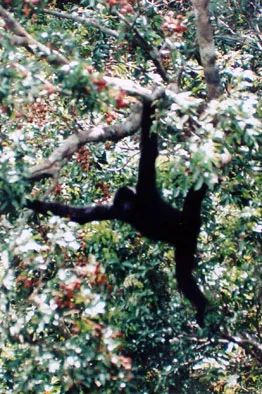
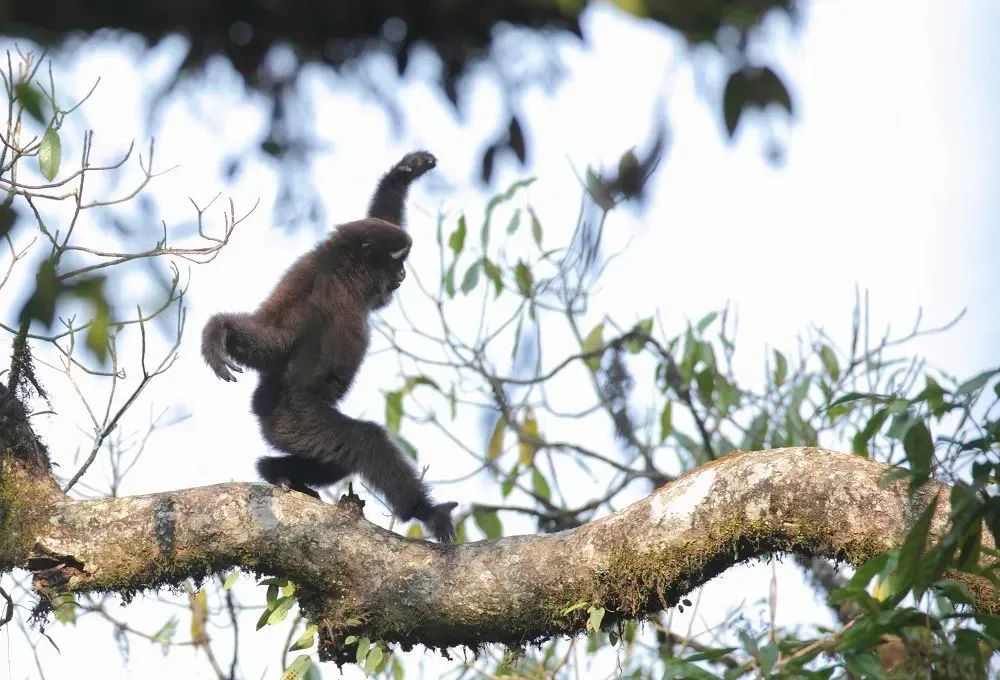
Sliding viewing distributed in the other four gibbons distributed in my country, from left to right:
Nomascusconcolor (nomascusconcolor) | Fan Pengfei
East Black Crown Biben (N. NASUTUS) | Zhao Chao
Hainan gibbon (n.hainanus) | Chen Qing
Hoolocktianxing | Zhao Chao
However, in history, the gibbon does not only live in tropical regions. Li Bai wrote that "the apes on both sides of the strait couldn't cry, and the light boat had passed through the mountains", which proved that the three gorges at that time was the habitat of the gibbon. Scientists also found the lower bone fossils of the gibbon in this area. Through the retrieval of the local chronology, it can also be found that there were 4 gibbon records in the history of our country, which are relatively densely intensive, namely at the junction of Hubei, Shaanxi, and Henan in the central region. Guangxi, Yunnan, is located in Hainan, South China.
The ancients are no stranger to the gibbon. During the pre -Qin period, there was a record of the gibbon in the Chu royal family. Lieye Qin Jianli, who was unearthed in recent years, depicts. In the 27th year of Qin, Qianling County dispatched hundreds of people to catch the gibbon alive as a pet to tribute to the royal family. The gibbon bones unearthed from the pit 12 in Chang'an District, Xi'an provided a side certificate with this record. The owner of this tomb was Qin Shihuang's grandmother's grandmother Xia Queen, this gibbon is her pet. Subsequent studies have further discovered that this gibbon is different from the existing gibbon today. It is an extinct species that is named the Junzi Imperialis. The gibbon skeleton appears in the tomb of the Queen Mother Qin Xia. This gibbon is different from all the current growth aim today | Samuel Turvey/ZSL
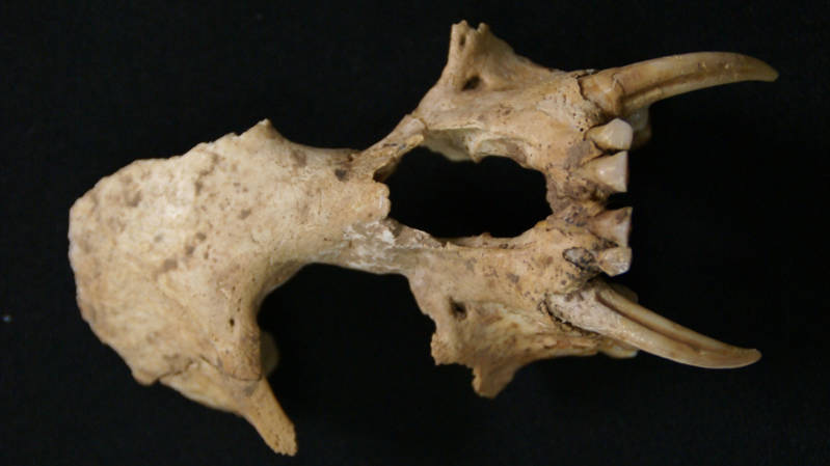
For more than 2000 years since the Qin Dynasty, China's climate is not unchanged, but the distribution of the gibbon does not seem to have been affected much -the gibbon records of local Zhili still appear frequently. The altitude also increased from 486 meters to 1069 meters. In the late Ming and early Qing dynasties, there was another small ice period in my country, but the gibbon during this period not only did not retreat south, but also slightly moved north.
Since the gibbon does not seem to be afraid of cold, why did they retreat south later, so that they are only trapped in tropical regions today?
Apes

The short -term expansion in the late Ming and early Qing dynasties was actually a turning point. After that, the gibbon habitat in China had a rapid trend of southward retreat and crushing, which was closely related to the changes in population at that time.
In the past 500 years, the distribution of gibbons in my country, from left to right, from top to bottom to 1550, 1650, 1775, 1875, 1925, and 2000 distribution | References [4]
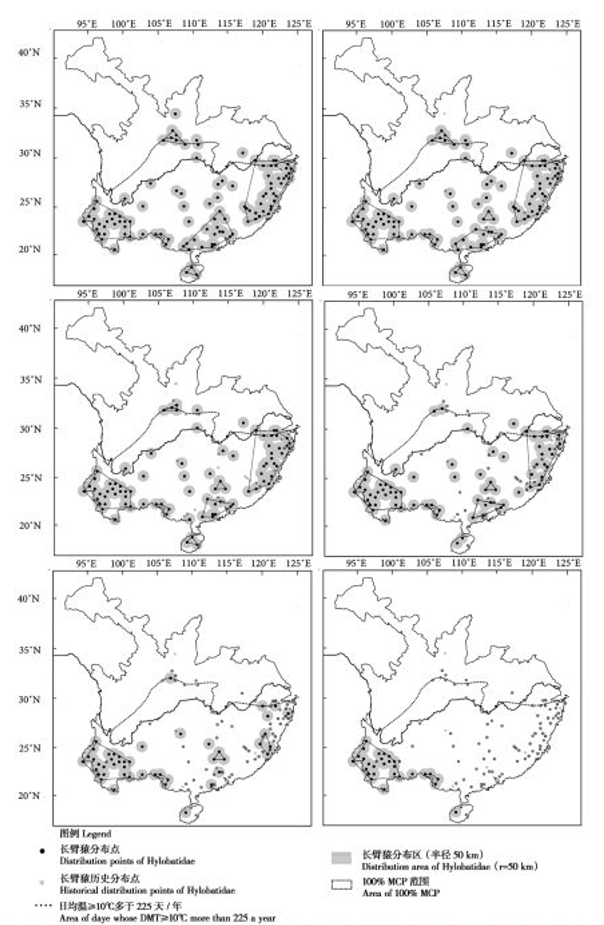
Due to years of war, the proportion of population loss in the late Ming and early Qing dynasties was amazing. According to different calibers estimates, at that time, the loss of population in the hinterland of Central Plains was nearly 80 %. In the eighteenth year of Shunzhi (1661), the minimum point was 9.2 million; since then, the world has gradually been peaceful. Growth has exceeded 200 million by 1775, and has always maintained a trend in hundreds of years.
There are more people, of course, more cultivated land, but this also means that more forests will be cut into cultivated land. A large number of forests in the Fujian mountain area were reclaimed into tea gardens in the late Qing Dynasty. The largest gibbon habitat in my country was destroyed by a benign habitat. The same story also occurred in several other gibbon distributed areas -the earliest decline in the galaxy group in the Three Gorges region, and in the Song Dynasty in the 12th century, it has become less sharply; the girch apes in Shaanxi are panting in the early days of the Republic of China; The gibbon in northern Guangdong has fallen into a decline, and only limited populations have been retained in some areas of Hainan Island.
In fact, the story of human and wild animals not only happened in ancient times. The northern white cheeks gibbon, which was announced in my country's wild, was finally inhabited in Xishuangbanna. With the growing population and a large amount of economic crops, the proportion of native forest land in Picna today has decreased by 20%compared with the 1970s, and the area of rubber forests has increased from 1.3%to 12%of the area. In the native forest, there are also a large number of forest planting and picking, and there are similar situations in the core area of the protected area -these have exacerbated the crushing of the northern white cheek gibbon habitat. The same is true of the white palm gibbon. The number of white palm gibbons in the last group of white palm has fallen sharply, and it has a direct relationship with the virgin forest around the South Rolling River Reserve in the 1960s and 1970s.
Xishuangbanna's rubber forests look green, but compared with native forest land, the ecological value of rubber forests is actually very low | Chinese Academy of Sciences Xishuangbanna Herbus

In addition to changes in habitats caused by human activities, hunting activities may also be an important factor in the decline of the garaphs. In addition to obtaining fur, there are many "uses" in the gibbon, such as their bones can be made of flute or traditional national medicinal materials "Luandi"; there are rumors that chopsticks made of gibbon upper limbs can be measured. After the founding of the People's Republic of China, the gibbon from the Guangdong Qiong area suffered commercial killings. In 2017, in a visit to the north white cheeks gibbon, more than half of the male interviewees over the age of 50 participated or witnessed the hunting activity of the North Baiqi Biben. At the end of 2018, when investigators were looking for gibbon at the border between the three countries and the three countries, they also clearly heard at least 3 sounds.
Will they come back?

White palm gibbon and north white cheeks gibbon have wild populations in other countries. If the habitat can be recovered, the gibbon that has disappeared may also spread to my country.
However, the difficulty of multinational coordinating protection is actually more difficult; and, with several neighboring countries distributed in these two gibbons, the protection of itself is worrying. During the survey and visits to the Beibai cheeks in 2018, many residents living on the border mentioned that a few years ago, a Lao people came to the village to sell the northern white cheeks long ath cubs in the village. Too (this also allowed researchers to suspect that the gibbon shot in 2018 may be an individual who raised pets or abandoned), and gibbon meat appeared in the odd market in the border area. In addition, the stress of habitats in our country may even be more intense in these countries. The gibbon in the painting of Yiyuanji painting in the Song Dynasty, this gibbon is bound by a rope inlaid with jewelry, obviously a pet of rich people; however, in modern times, the phenomenon of gibbon as pets may still exist.
The other way to return these two gibbons to the wild, another way is artificial breeding and returning from the wild. The north white cheeks gibbon is the largest number of gibbrars in my country. There are more than 100 at present, and artificial breeding has been achieved.然而,要实现野外放归,还有许多问题需要解决——国内动物园的长臂猿存在近亲交配的现象;长臂猿分类复杂,部分饲养机构至今未能对自己圈养的长臂猿准确分类,尤其北白颊长臂猿和The yellow gibbon is easy to be confused, so there may be hybridization problems in the gibbon of the centered gibbon; coupled with the gibbon of some breeding units may come from illegal channels, lack of specific information of the gibbon, and spectrum management is even more chaotic.
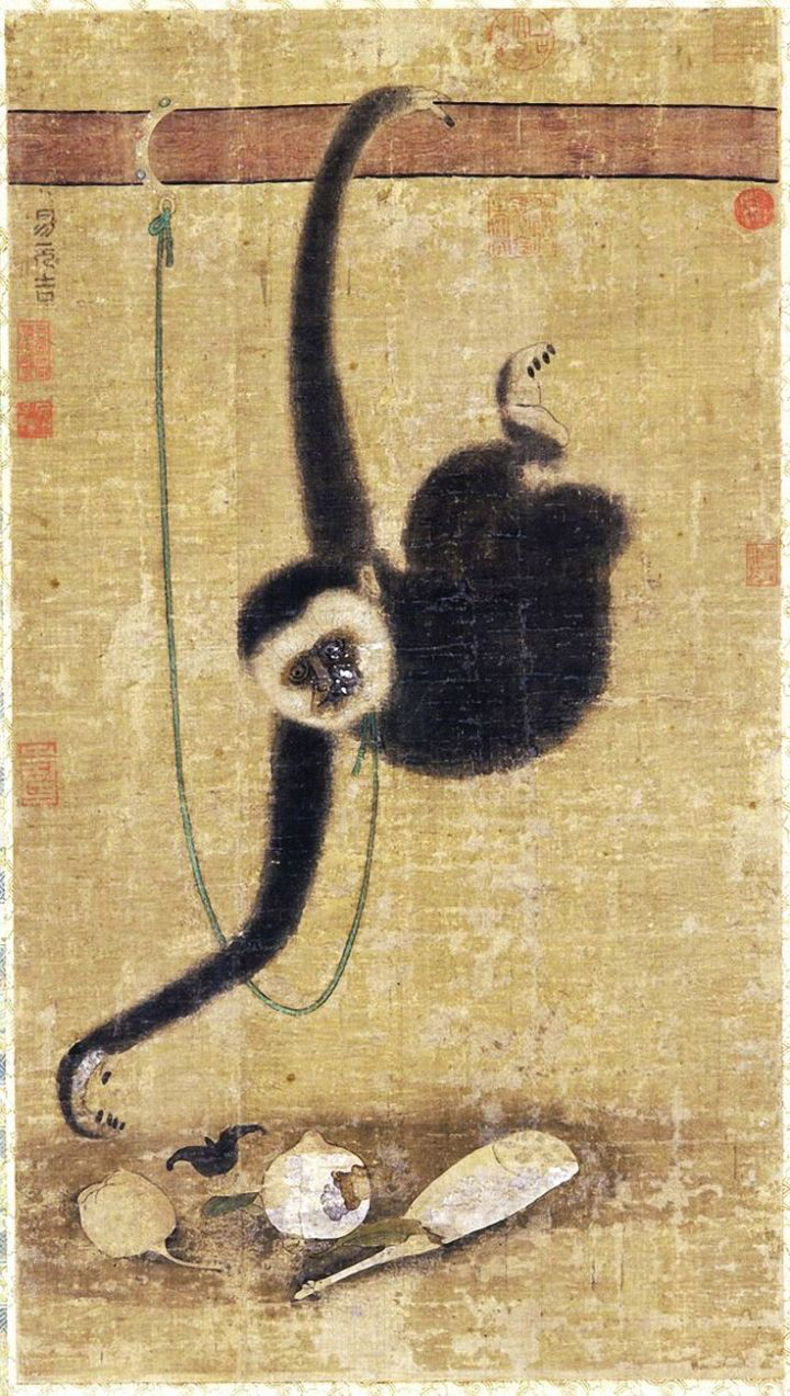
However, the most important problem is that even if we can ensure the syndrome of the gibbon and overcome its genetic diversity issues, where should we put them home? Is our habitat ready?
The number of gibbrars in Hainan is now less than 50, but it is the only number of all gibbons; the conservation workers expand the habitat for them, and build a passable rope bridge | chan, B. P. L., lo, y. f. p., et al. (2020) (2020) (2020) (2020) (2020) (2020) (2020)
From the perspective of paleontological evidence, my country is likely to be the original evolution of the existing gibbon, and it is also the country with the most abundant gibbon species (only one less than Indonesia) and the largest distribution area in history. But as far as you are now, my country's gibbon protection situation is not optimistic. Moreover, the environmental pressure of the white palm gibbon and the north white cheek gibbon also occurred on other gibbon. If you do not change as soon as possible, the other four gibbon may repeat today's story.
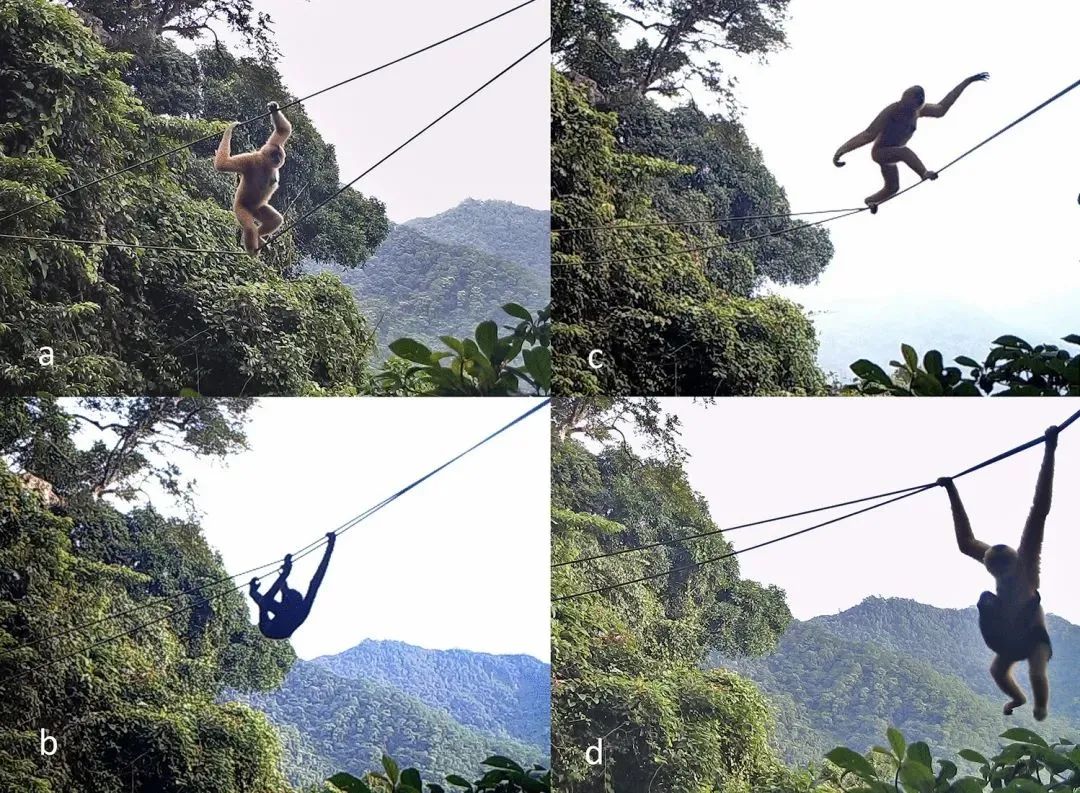
Before 2022, we witnessed several extinct stories that happened around us. It is not pleasant to record such a story, but such a record is still very meaningful. Scientific research and conservation work is the basis for repairing the ecology, but at the same time, if more people know and pay attention to these endangered species, maybe more people will support and participate in the protection work -until those who originally shared with us to share with us The creature of a homeland returned to this land.
references
[1] Fan Pengfei. Classification and protection of Chinese gibbon familys [J]. Journal of Beasts, 2012, 32 (3): 11.
[2] Song Zhiyong, Yang Hongpei, Yang Zhengbin, et al., Xishuangbanna's northern white cheeks galaxy group status and protection countermeasures [J]. Western forestry science, 2017, 46 (3): 6.
[3] Unfortunately, this time we did not find the north white cheek gibbon. Yunshan Protection .https: //mp.weixin.qq.com/s/bw4hwrov9ekvykztrczlmw
[4] Zhou Yunhui, Zhang Peng. In the past five hundred years, the distribution of gibbon in China [J]. Journal of Beasts, 2013, 33 (3): 9.
[5] Li Yunqiao, Zhu Youshuai, Yang Yuzhao, etc. The current status and protection countermeasures in the Chinese circle to raise the long apes [J]. Forestry Survey Plan, 2018, 43 (2): 5.
[6] Ma Shilai. Turbish the origin of the gibbon of the gibbon [J]. Journal of Beasts, 1997, 17 (1): 2. 2.
Author: a man is wandering
Edit: Mai Mai
- END -
"Logo" logo (logo) collection announcement

In order to further enhance the popularity and influence of the Jiuquan Jiuquan br...
Bio -degraded wool bandages, soft and humidity, helping to cure wounds
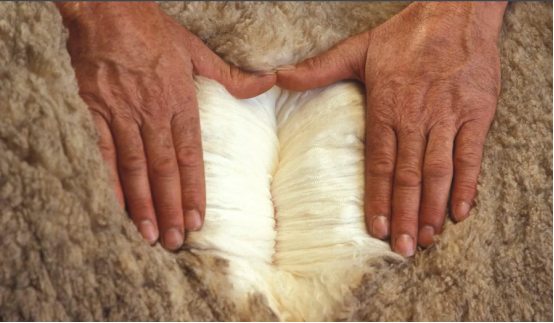
Science Fiction Network June 22 (Liu Yazhu) Merrobine Wool is well -known in the w...